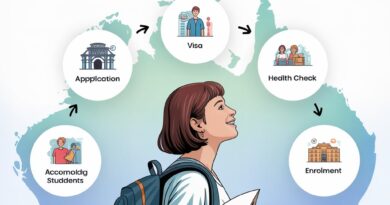6 Ways Student Loan Reform Will Impact Borrowers
Introduction
Let’s face it — student loans have been a financial burden for millions. But hold on, change is finally on the horizon. The government’s long-awaited student loan reform is here, and it’s shaking things up in a major way.
Whether you’re fresh out of college or still chipping away at your balance from a decade ago, these reforms are designed to offer relief, clarity, and a fairer shot at financial freedom.
Ready to find out how your student loan life might change? Let’s break down the 6 key ways student loan reform will impact borrowers like you.
1. Lower Monthly Payments for Most Borrowers
Income-Driven Repayment (IDR) Plan Adjustments
Imagine paying based on what you actually earn — not just what you owe. That’s the idea behind updated IDR plans. These reforms reduce the percentage of your income used to calculate monthly payments.
New Formula to Calculate Affordable Payments
The new rules raise the income exemption and slash the percentage owed, meaning some borrowers could see their payments drop to $0. That’s right, zero.
Impact on Budget and Lifestyle
Lower payments can mean more money for rent, food, or savings. This shift could be a game-changer for budgeting, especially for early-career professionals still climbing the salary ladder.
2. Faster Loan Forgiveness
Changes to Public Service Loan Forgiveness (PSLF)
The PSLF program is getting a much-needed makeover. Previously riddled with red tape and confusion, the reform simplifies eligibility and accelerates forgiveness timelines.
Shorter Timeframes and More Eligible Borrowers
Now, more types of employment and repayment plans count. Plus, forgiveness may come in as little as 10 years, even for those in non-profit or government work.
Real Stories of Faster Forgiveness
People who’ve been stuck in the system for years are finally seeing their balances vanish. That’s real financial liberation, not just policy on paper.
3. Simplified Repayment Options
From Multiple Plans to a Few Clear Choices
Ever felt overwhelmed choosing between 10+ loan repayment plans? You’re not alone. Reform trims the fat, consolidating plans into easy-to-understand options.
Better Navigation for New Grads
Graduating into debt is hard enough. With clearer plans and online tools, borrowers can now make smart decisions from day one.
End of Confusing Bureaucracy?
By reducing complexity, reform helps eliminate the mistakes and misinformation that often cost borrowers thousands.

4. Interest Accrual Overhaul
Interest-Free Periods & No Balance Growth
One of the most exciting updates? Some borrowers may no longer see their balances balloon due to interest. Especially during periods of low income, unpaid interest won’t pile on top of your loan.
The Death of “Negative Amortization”
In the past, you could pay every month and still watch your debt grow. With reforms, what you pay actually counts.
More Transparency, Less Stress
Knowing your payments are reducing your balance — not just feeding interest — creates a healthier borrower mindset.
5. Support for Defaulters and Delinquents
Easier Pathways to Get Back on Track
Default used to be the end of the road. Now, it’s just a bump in the journey. New initiatives help bring borrowers out of default quickly and without penalty.
Clean Slate Programs
The “Fresh Start” initiative offers a one-time opportunity for defaulted borrowers to reenter good standing and access new repayment options.
Credit Score Recovery Boost
This shift also means a chance to rebuild credit—a crucial step toward buying a home, starting a business, or getting a car loan.
6. Increased Accountability for Loan Servicers & Schools
Crackdown on Predatory Schools
Schools that overpromise and underdeliver are now being held responsible. If your school misled you, you may be eligible for loan discharge.
School Performance-Based Loan Discharges
Low graduation rates and poor job placement can now trigger automatic loan relief for affected students.
Servicer Reform & Borrower Advocacy
Loan servicers must now provide clear, timely, and accurate info. Reforms also expand borrower protections and complaint resolution options.
🎯 Conclusion
The student loan reform isn’t just about fixing numbers — it’s about restoring hope. For years, borrowers have felt trapped, confused, and overwhelmed. But with these reforms, the path forward looks brighter, fairer, and more manageable.
Whether you’re dreaming of financial freedom or just trying to make next month’s rent, these changes are designed to help. It’s not perfect — but it’s a major step in the right direction.
❓FAQs
1. Will student loan interest rates go down?
No major rate cuts have been announced, but reforms focus on stopping interest from compounding unfairly—especially for low-income borrowers.
2. Can I benefit from reforms if I’m already repaying?
Absolutely. Many changes apply retroactively or allow current borrowers to switch to new, better plans.
3. How does reform affect private student loans?
Unfortunately, most reforms only apply to federal loans. However, discussions about private loan reform are ongoing.
4. Will these reforms apply retroactively?
Some will. For instance, PSLF updates are crediting past payments under certain conditions.
5. What happens if reforms are challenged in court?
Legal pushback is always possible, but most changes are grounded in executive authority and Department of Education regulation.



